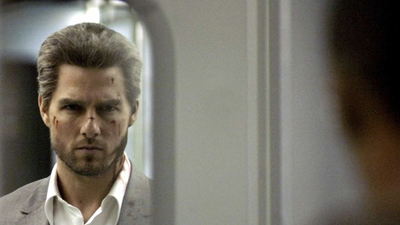Did the look of “Collateral” look like a step down for Mann, and for films? I fearful about that.
The precise film, which got here out 20 years in the past this week and simply got here out on 4K Blu-ray for the primary time, was a a lot richer expertise. It did not look slick or stable like Mann’s shot-on-film initiatives. It had a tough look, as if we had been seeing footage captured on the fly by anyone who wasn’t speculated to be current. It felt uncooked, like plenty of movies within the late ’90s and early aughts that had been shot with standard-definition video cameras after which printed to 35mm movie (“movie out” is what this course of was known as), creating a wierd hybrid texture. (For examples, take a look at “The Celebration,” “Dogville” and “28 Days Later.”)
I used to be struck by the truth that visible components that the majority big-budget Hollywood films would have averted for worry of being known as amateurish (similar to numerous grain in footage captured at evening, or apparent video “tells” like smeariness/strobing) weren’t solely current in “Collateral” however appeared to have been leaned into reasonably than minimized. The film appeared very snug in its personal digital pores and skin. This was common in low-budget work, nevertheless it was extremely uncommon in a $65 million manufacturing like “Collateral.” Even George Lucas, whose second prequel “Assault of the Clones” was the primary “Star Wars” film shot digitally, tried to make digital appear like 35mm movie to the utmost extent doable.
Most putting of all — and to my thoughts, a giant compensation for anyone who missed the stable richness of 35mm movie — you may see just about the whole lot that was taking place at evening in Los Angeles, together with the best way town’s lights had been mirrored in in low clouds. There was no straightforward approach to seize that particular attribute of city life on movement image movie. Not as vividly, anyway.
This was the look Mann needed, in accordance with an American Cinematographer article. Co-director of images Paul Cameron (working with Dion Beebe) stated the director “needed to make use of the format to create a sort of glowing city setting; the objective was to make the L.A. evening as a lot of a personality within the story as Vincent and Max had been.”


Comments are closed.